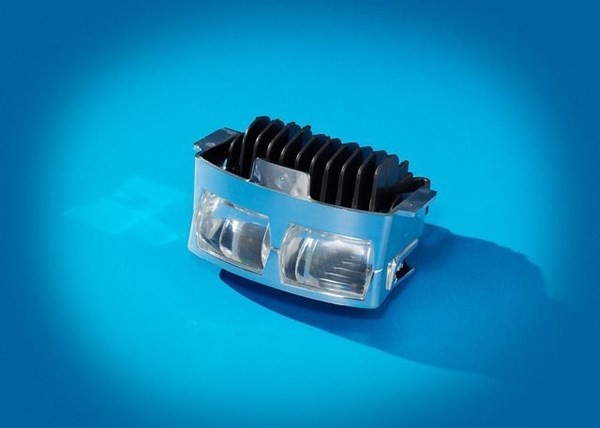3 Interesting Materials Finalists of SPE Auto Innovation Awards
Two novel injection molded components and a blow molded one made possible by modified or new materials.
Two novel injection molded components and a blow molded one made possible by modified or new materials.
I’m continuing my series of blogs on the award winners of the nine categories of the 2015 SPE Automotive Innovation Awards with these three finalists in the materials category. It’s not surprising to see that two of the three are related to automotive lighting where the technology evolution is on a roll, with plastics playing a major part.
• Rear Lamp Reflector: This injection-molded part is featured on FCA’s 2015 Dodge Challenger. Rear lighting plays an important role in safety and its continued evolution provides brands with a ‘signature’ look. Increasingly, new lighting technologies are being combined with plastics to create innovative new designs. This is exemplified by this rear lamp which has a unique lit and unlit appearance.

The system uses high specular and diffuse reflection from multiple LEDs to create a homogeneous light glow. Thanks to a special color additive, the high reflectivity of the white polymer—Lexan LUX2289-WH9g012 PC from SABIC—after molding and heat aging with minimal color shift eliminates the need for direct metallization or painting. Injection molding by Tier 1 Varroc Lighting Systems also enables design features like clips to be integrally molded close to LED circuit boards. A 40% per reflector cost savings is claimed.
• Blow Molded Spoiler: This part is featured on GM’s 2015 Cadillac Escalade, GMC Yukon and Chevrolet Tahoe. Working with the OEM and Tier 1 supplier ABC Inoac Exterior Systems, materials supplier Mitsubishi Chemical Performance Polymers came up with a modified thermoplastic to address this issue: blow molding spoilers over 50 inches in length with existing resins (primarily ABS) was difficult.

The company used innovative chemistry to tailor the ABS molecule to increase its molecular weight—for better parison control, improve thermal performance, and boost impact strength. The new material, Bulksam EX45G ABS, met or exceeded all functional and aesthetic requirements and was used to drop a 22-lb parison and to mold spoilers that are 57 x 14 x 5 in. with uniform wall thickness.
• Thermally Conductive Thermoplastic Heat Sink: This component is featured on the 2015 Ford Mondeo. It is a metal-to-plastic conversion of an LED lighting-module heat sink that was made possible thanks to a new injection moldable thermally- conductive polymer developed by Celanese.

Working with Tier I supplier Valeo, the new CoolPoly E3609 nylon 6-based resin was used to produce a heat sink that is 45% lighter, has thinner walls than die-cast aluminum, and used two-thirds less energy to manufacture. Moreover, it eliminates deburring, deflashing, the use of corrosion-resistant coatings, and machining of critical surfaces. It also provides equivalent thermal performance at lower cost, and tool life is projected to be six-times longer than for die-cast metal.
Search for nearly 100,000 grades of polymers on the Universal Selector by clicking here: http://www.ptonline.com/materials
Related Content
-
New CRM Streamlines Quoting for Automotive Molder
Eliminating the need to contact each supplier for every individual quote, a new CRM for automotive supplier Axiom Group tracks past quotes as well as industry history to generate fast, reliable RFQs and more.
-
Neste, Borealis and Covestro Plan to Make Polycarbonate From Recycled Tires
Companies announced agreement that will use advanced recycling to convert old tires into new PC-suitable for automotive applications.
-
Automotive Awards Highlight Emerging Technologies
Annual SPE Automotive event gives nods to several ‘firsts’ as well as sustainability.















